Development of Geography
Introduction
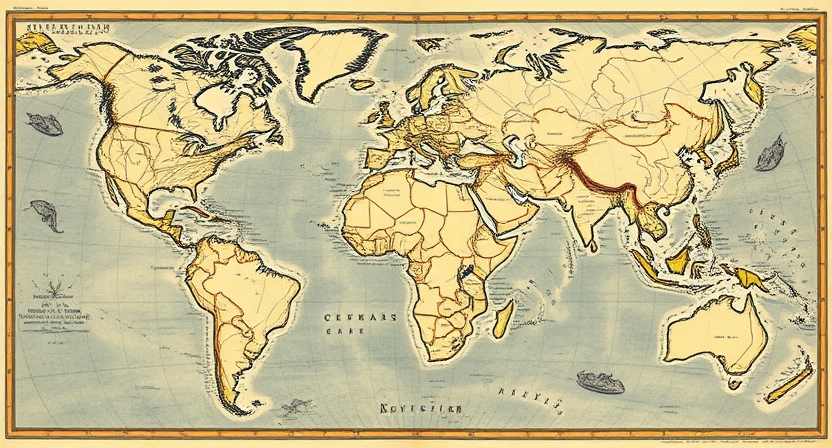
“Geography is the study of interaction/relationship between man and environment”. Though several definitions of Geography have been given, the most important in vogue is that given by Hartshorne in his monumental work, The Nature of Geography (1939), revised in 1959 as Perspective on the nature of Geography, in which he stated that “Geography is concerned to provide accurate, orderly and rational description and interpretation of the variable character of the Earth’s surface”.
So let me begin our discussion by asking a question – “Is Geography the first knowledge to evolve?”. The answer is probably, Yes, because from the very beginning humans are trying to understand their immediate environment. What does it mean? Let me explain.
Scientists conduct researches about climate change, ecosystem dynamics and behavior of animals. City planners analyze the physical and social aspects of neighborhood to create sustainable and efficient urban environments just like we have seen in Ancient civilizations such as Indus Valley Civilization, which is well planned Civilization.
Also, peoples often explore local history and culture through museums, cultural events and heritage sites. In Ancient religions, masses worshipped nature in the form of gods, such as Thunder God, River goddess etc. They do so because of less understanding of environment.
There are many more examples. These examples highlight various ways humans seek to comprehend and engage with their surroundings, whether through scientific inquiry, community involvement, or personal exploration.
There is another question that arises here “Why Geography did not develop at that time?”
Initially, during the Ancient and Medieval period, there is slow development of technology because knowledge of environment was very limited as there is no strong principle in any discipline. The individuals were scholars of Multi-discipline (since the knowledge was limited there was no need for specialization).
So you might ask me that “Author! Then tell us when things get serious?”
After The Renaissance period which is known for Industrial Revolution. At this phase, there was a rapid development in technology. This phase experienced “Bombardment of Knowledge/information”. It became unmanageable for an
individual to study and gather so much knowledge. So, this created a need for specialization. Further, in 18th century, the formal birth of Geography took place and ‘Geography’ as a discipline evolved.
So, lets advance towards the periods of Geographical development in a bit detail.
Table of Contents
Periods of Geographical development
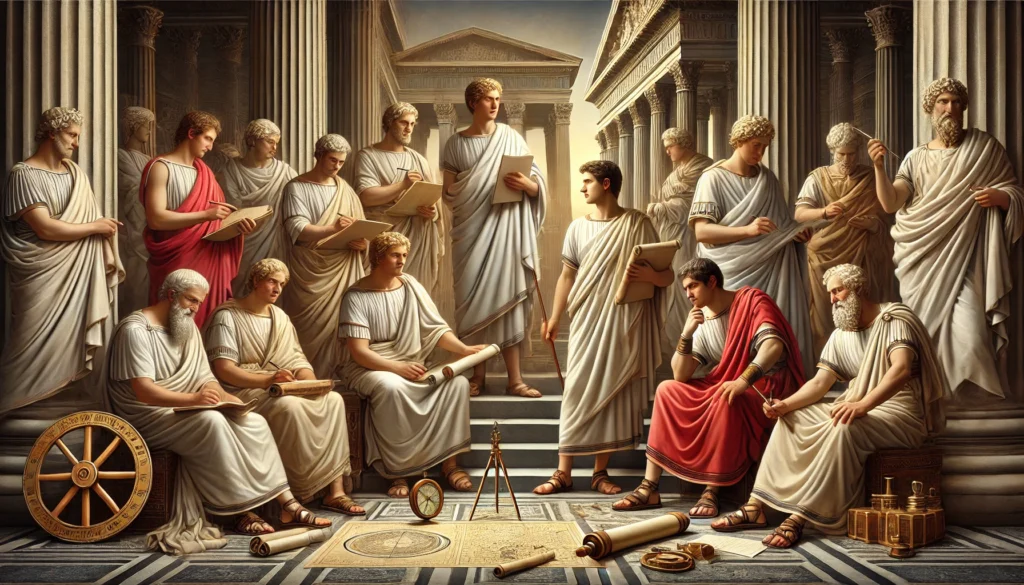
This period of Development of Geography was dominated by Greek and Romans. Let me take you into a little detail here.
Greeks
Greeks played an important role in the Development of Geography by giving early theories about the Earth which lead to the advancement of Geography as a discipline, by doing systematic studies on Geography by Herodotus, bringing out the concept of Latitude and Longitude by Hipparchus, discovering Mathematical Geography by Erotosthenes, towards mapping and regional descriptions by Strabo, and Claudius Ptolemy work, Geographia, offering instructions for creating maps.
Romans
If we talk about Romans, they also contributed heavily in development of Geography. They enforced Geography in practical use and expansion. They developed Itineraria, a route map that focused on roads, distances, and stopping points rather than Geographic accuracy.
It was known as Cartographic Innovation.They contributed in land surveys and boundaries accompanies by Geographical writings and Environmental geography.
Therefore, Greeks and Romans has legacy in the development of Geographical science or rather we can say that they laid the foundation of Geographical science.
Their works were preserved and further developed by Islamic scholars during the middle ages.
Medieval period
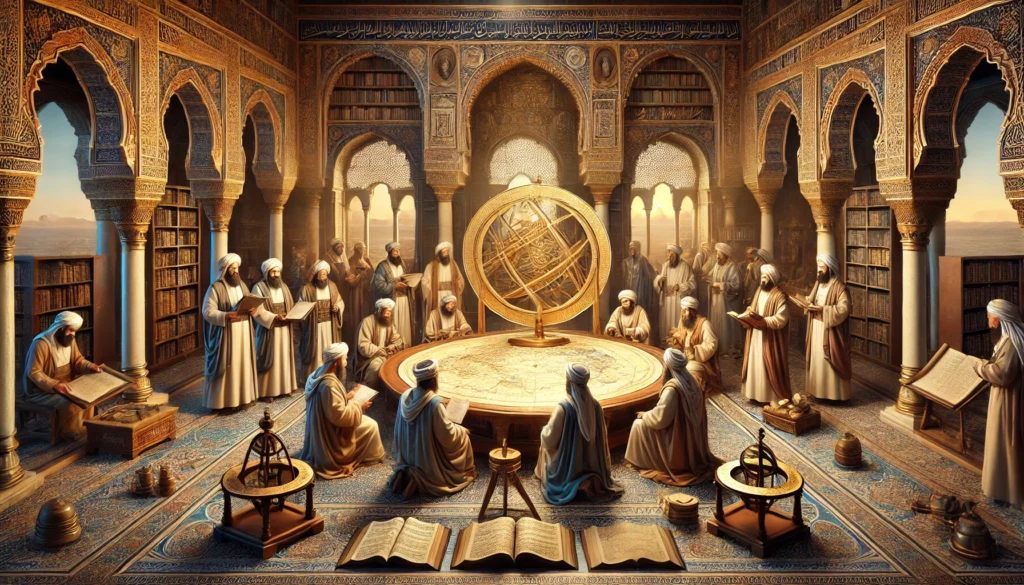
This period in Geography is in the commands of Arab Geographers. They made significant contributions to the field of Geography.
The Arab-Islamic world, stretching from Spain to India became a center of learning and Muslims scholars were instrumental in preserving, enhancing and disseminating Geographical knowledge.
Al-Idrisi, Ibn Battuta, Al-Biruni, Ibn Khaldun and Al-Masudi were some of the Arabs who bestowed significantly in Geography.
There were some innovations and techniques, such as, mapmaking and Cartography, use of Astronomy in Geography, Books and Encyclopedia, were put forward by Arabs.
In Europe this period is known as Dark Age. This period witnessed influence of church in Europe. So no scientific development.
Renaissance period
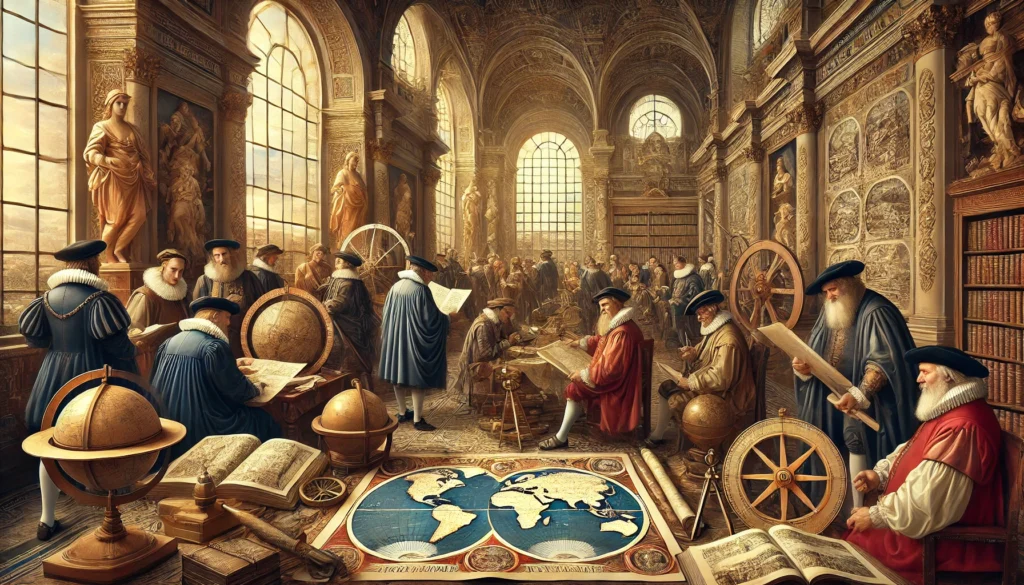
This period was focused in Europe. During this period science always challenged dominance of church.
This period is known for:
- Renewed interest in classical knowledge
- The Age of Exploration
- Advancements in Cartography
- Scientific revolution and Empirical approach
- New Geographical knowledge
- Impact of Cosmography and global understanding
Some notable figures:
- Martin Waldseemuller
- Amerigo Vespucci
- Derardus Mercator
- Sabastian Munster
The Renaissance set the theme for modern Geography.
Classical Period
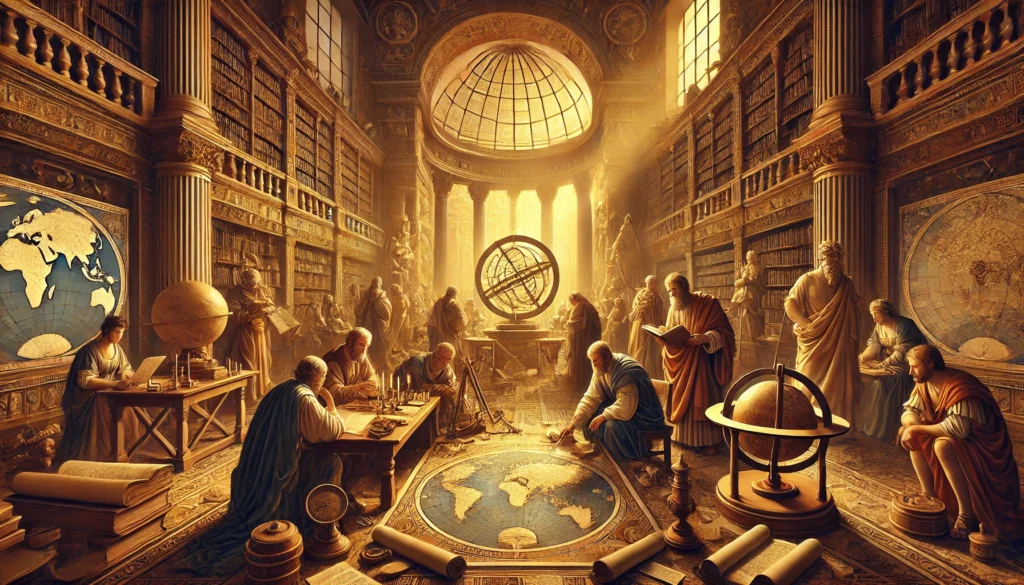
The period from 17th century – 1st half of 18th century, comes under classical period. This period is known as Evergreen /Timeless, denoting to something which would be always relevant.
After a long discussion, a question – Why classical?
Because fundamental concepts were developed during this period.
This period perceive the emergence of two great geographers
- Bernhard Varenius
- Immanuel Kant
These two played momentous role in Development of Geography as a discipline during the classical period. During this period, concepts like Dualism and Dichotomy developed. Now, we are moving towards the main part of our discussion, which is Modern Period.
This period is divided into Pre-Modern and Modern. Modern is further subdivided into early Modern Period, Intermediate Modern Period, Late Modern Period and Post Modern Period. So, let’s dive and see what’s in it.
1. Pre-Modern Period (18th century – 19th century)
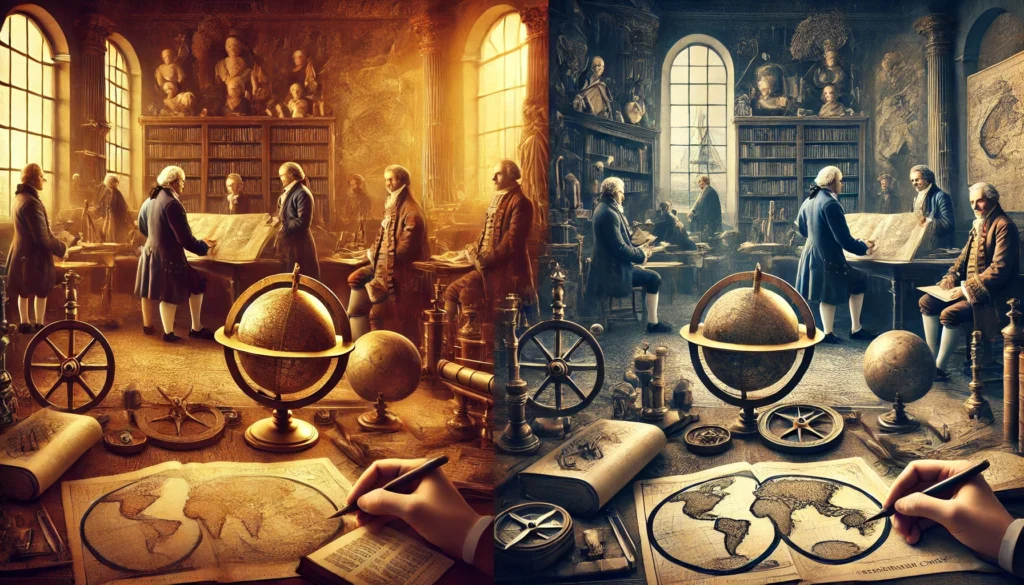
This Period had two great scholars named A.V. Humboldt (till him no exclusive geographer) and Carl Ritter (first person to study geographer exclusively.
Humboldt and Ritter added layers to the fundamental concepts of classical period. They have new meanings to the fundamental concepts.
2. Modern Period (18th century – 19th century)
1859– Darwin’s concept : Origin of Species
His concept stated that humans are just another species who will be governed by environmental laws. His theory gave an opportunity to the erstwhile geographers to relate geography with science.
i) Early Modern Period : 1859- world war I
During this period two important school of thought emerged :
a) Determinism – German school of thought
b) Possibilism – French school of thought
In Early Modern Period, Development of Geography was mostly in Europe.
By the beginning of 20th century, two more schools of thought evolves
a) British School of thought
b) American school of thought.
ii) Intermediate Modern Period : World War I – World War II
Intermediate Modern Period is actually inter war period, which takes place in between two major wars – World War I and World War II.
During this period, scene of geography shifted to Anglo-American school. So, most of the geography we study after this period is Anglo-American.
Also, Russian school of thought developed during this period. However, what we study in Geography is not much of Russian school.
iii) Late Modern Period (1950 – 1970’s)
This period is also known as Quantitative revolution period. During this period, Geography was made objective and scientific. Why?
After World War II, it was believed that discipline like Geography had a very miniscule contribution in World War II.
Hence, Geography was threatened. Funding of geography discipline in Universities were stopped. Thus, Geographers thought of making Geography a scientific discipline.
2nd half of Late Modern Period: Early 1970’s- late 1980’s.
This phase is known for the advancement of behavioural Geography, which is a middle path between Quantitative /objective geography and subjective/Qualitative Geography.
Two more fields emerged:
a) Radical Geography – Political in nature
b) Humanist Geography – Subjective in nature
iv) Post Modern Period – Late 80’s to present
Post Modern period was divided into two-
1) Late 80’s- late 90’s : This timeline is known for chaos in Geography. Some new subfields emerged in this period –
a) Behavioural Geography – Still existed
b) Radical Geography – Wanted to throw out capitalism
c) Feminism Geography
d) Cultural Geography – Study of the culture of an individual.
e) Welfare geography – Concerned with Equality and Inequality.
f) Environmentalism – Talks about philosophy that the geographical nature must be protected by the harmful impacts of humans.
2) Late 90’s – Present – Since 90’s- Environmentalism Geography is dominating.
Conclusion
Therefore, development of Geography is followed by many stages and timelines. Each period witnessed something new which added a new taste in geography. Also, it saw ups and downs during the inter war period but it still thrives.
Now, Geography has many sub fields which fulfills the interest of various individuals and groups. Geography, as discipline, always develops and, in future, it will keep advancing towards new principles and phenomenas.
Useful Links
Image Creation – ChaGPT , DeepAI
Research – Books, Wikipedia ETC
My Website – Scar Media
(I am not promoting these website, I used them so I mentioned them.)

